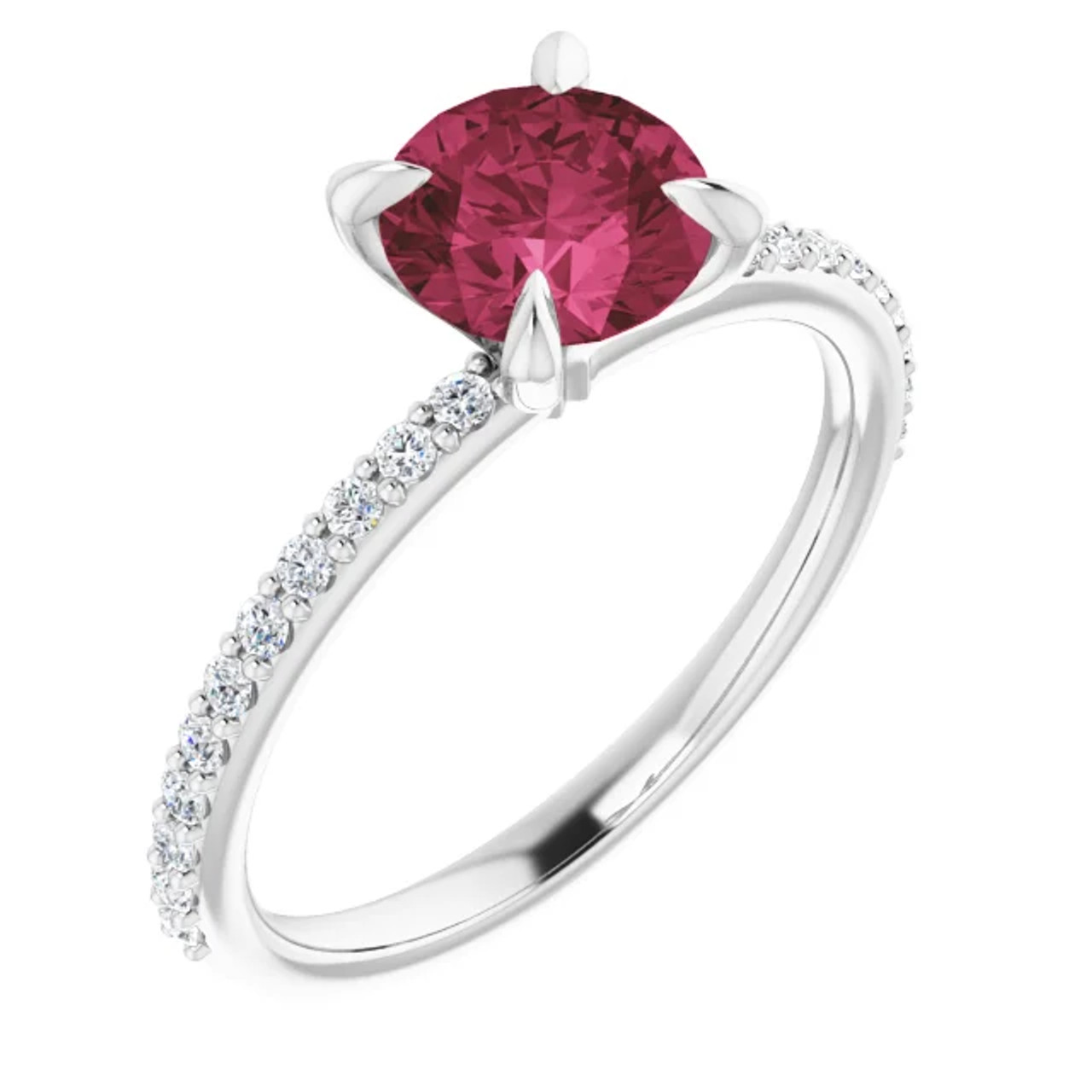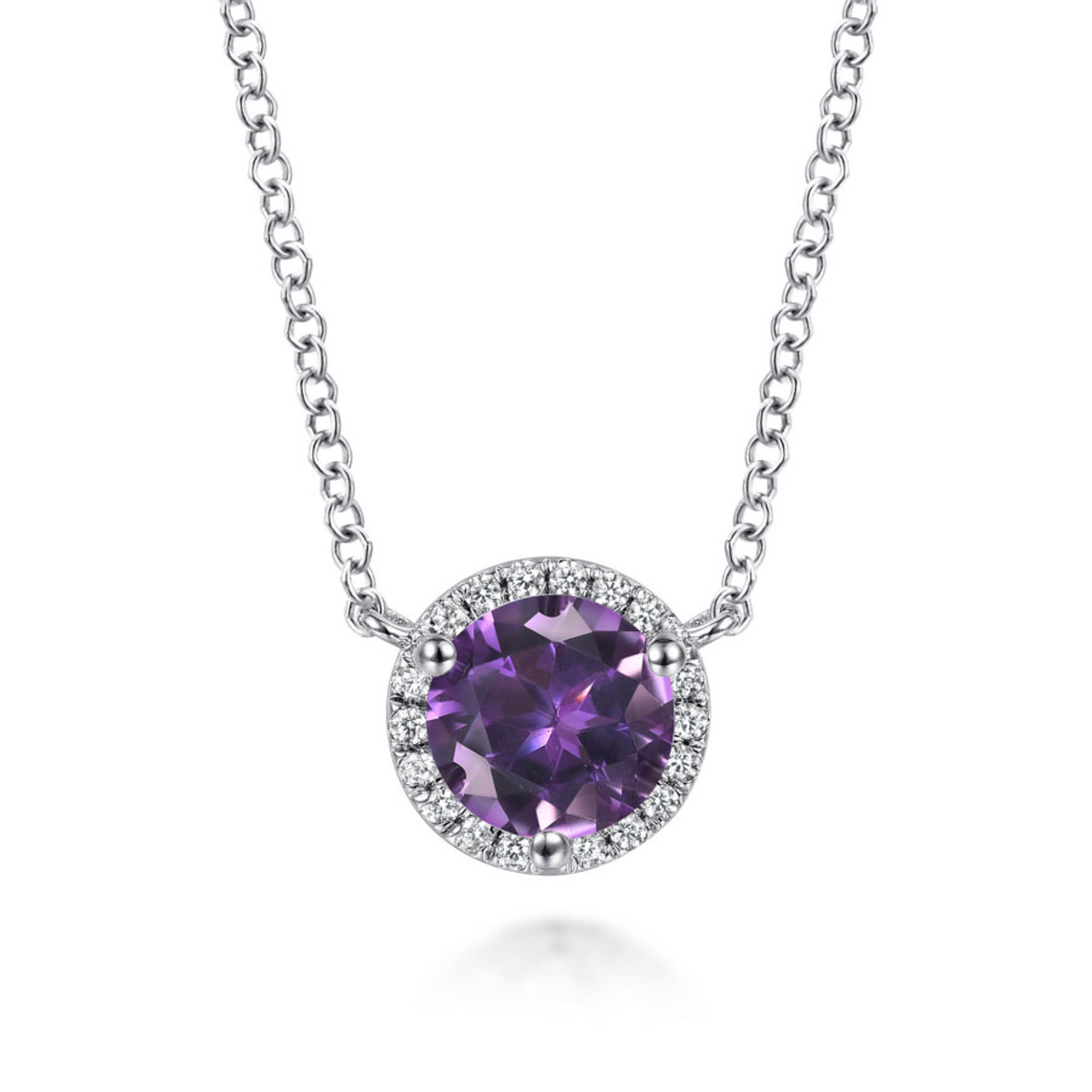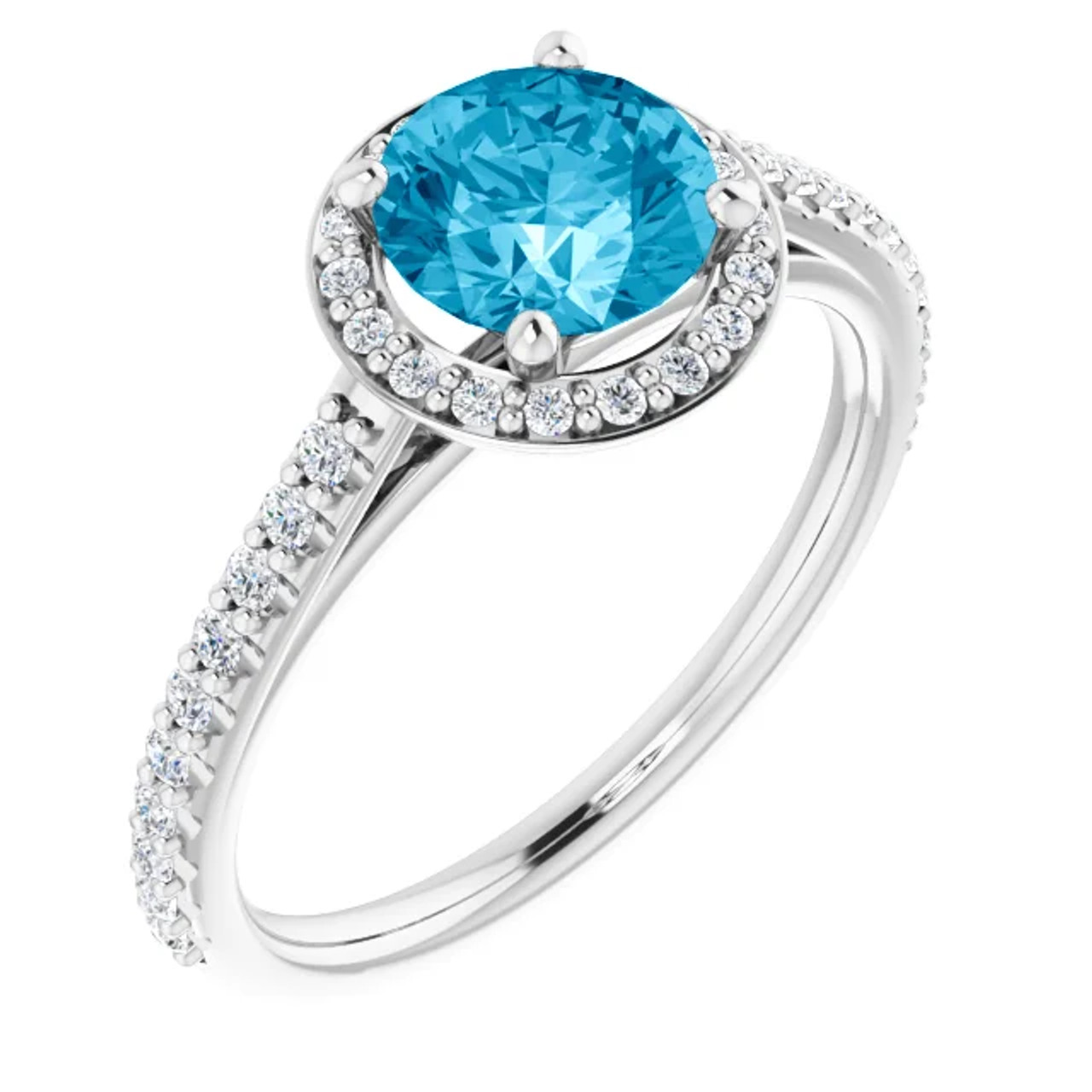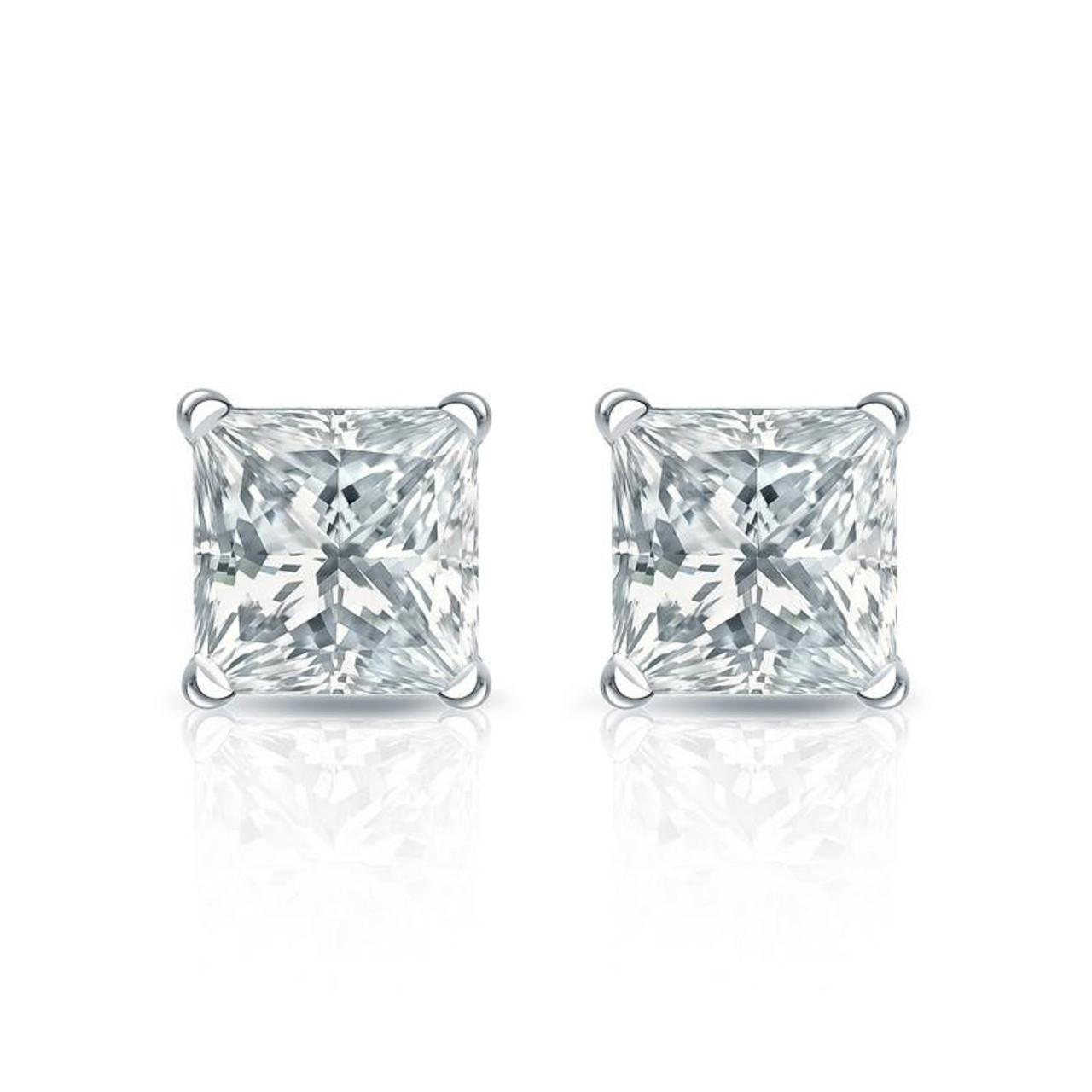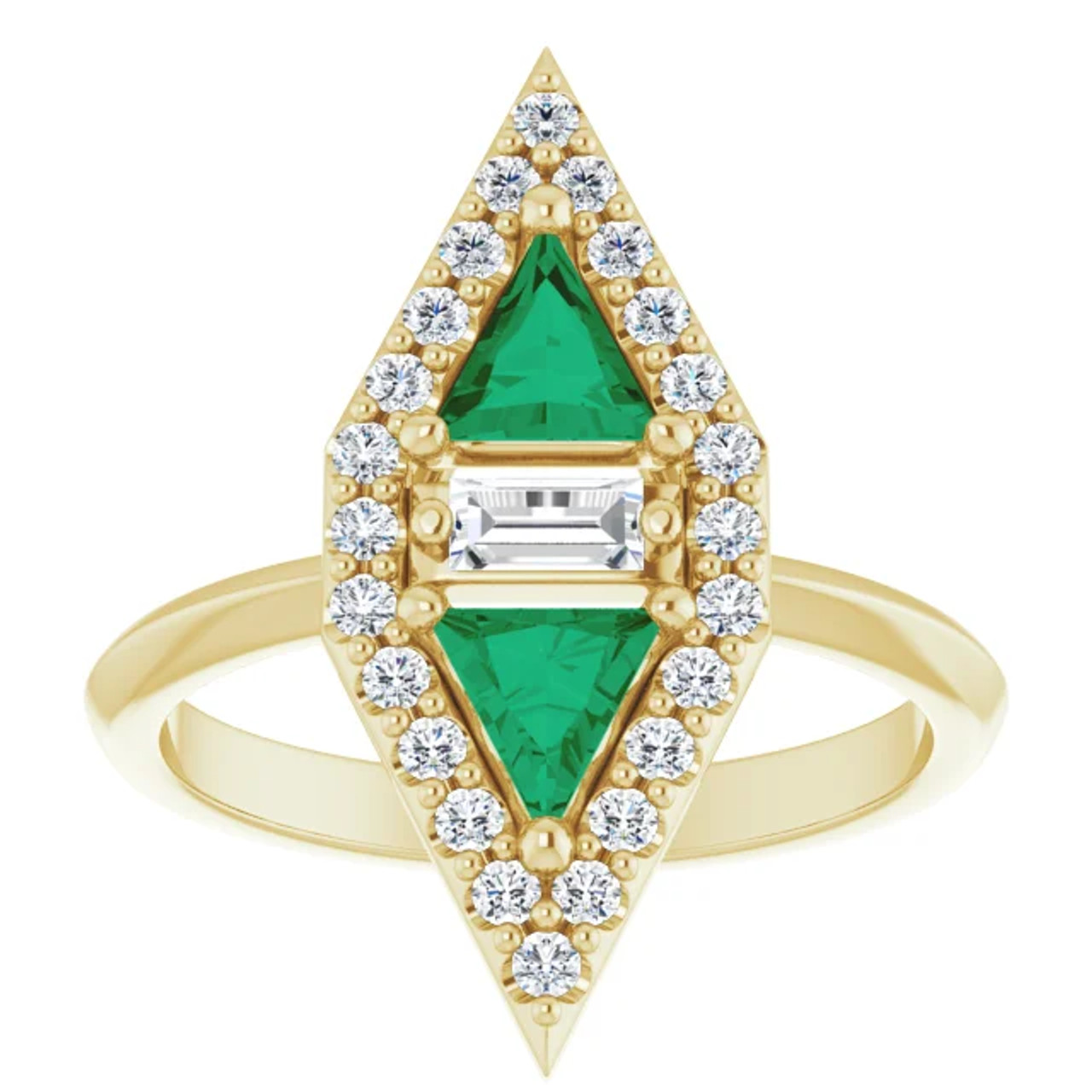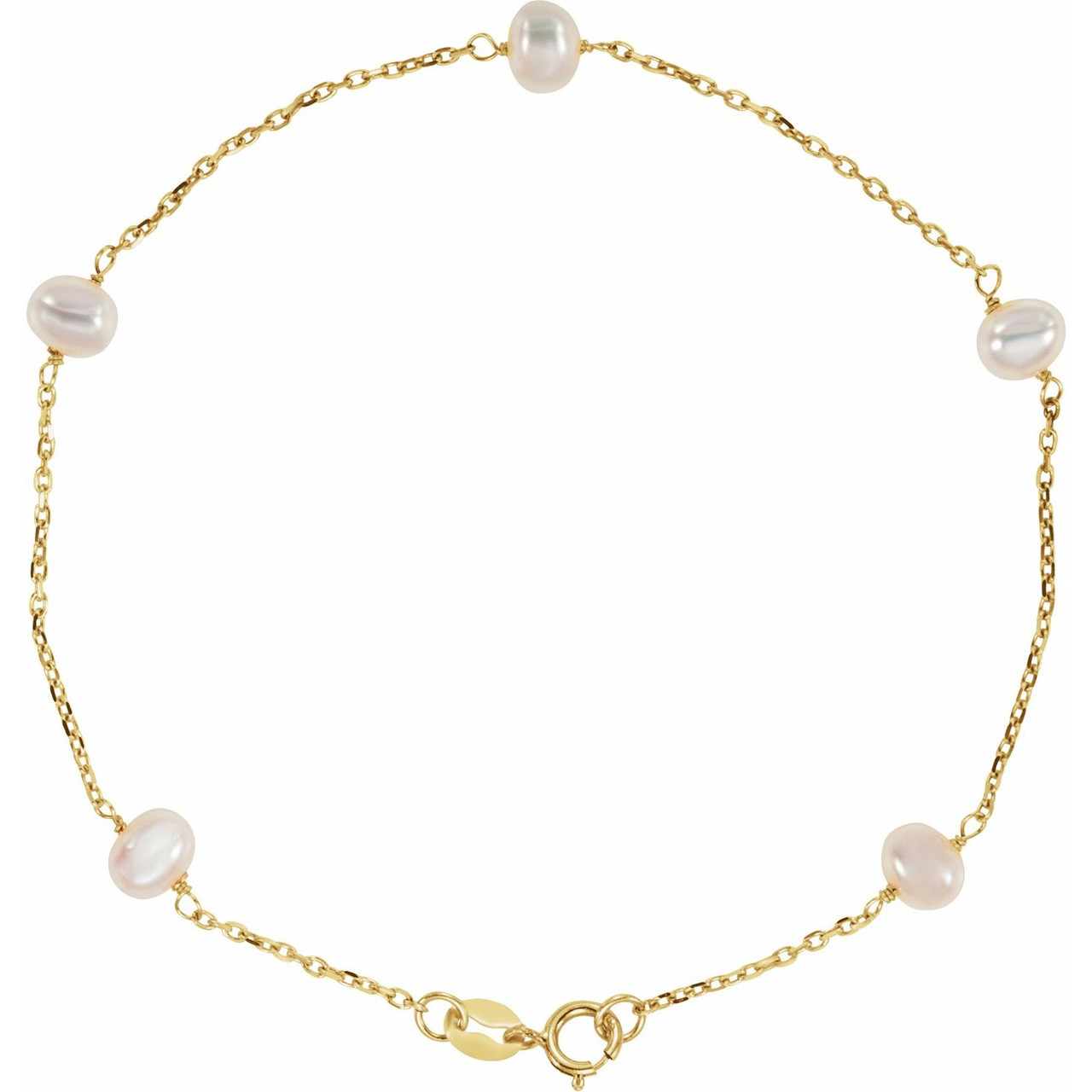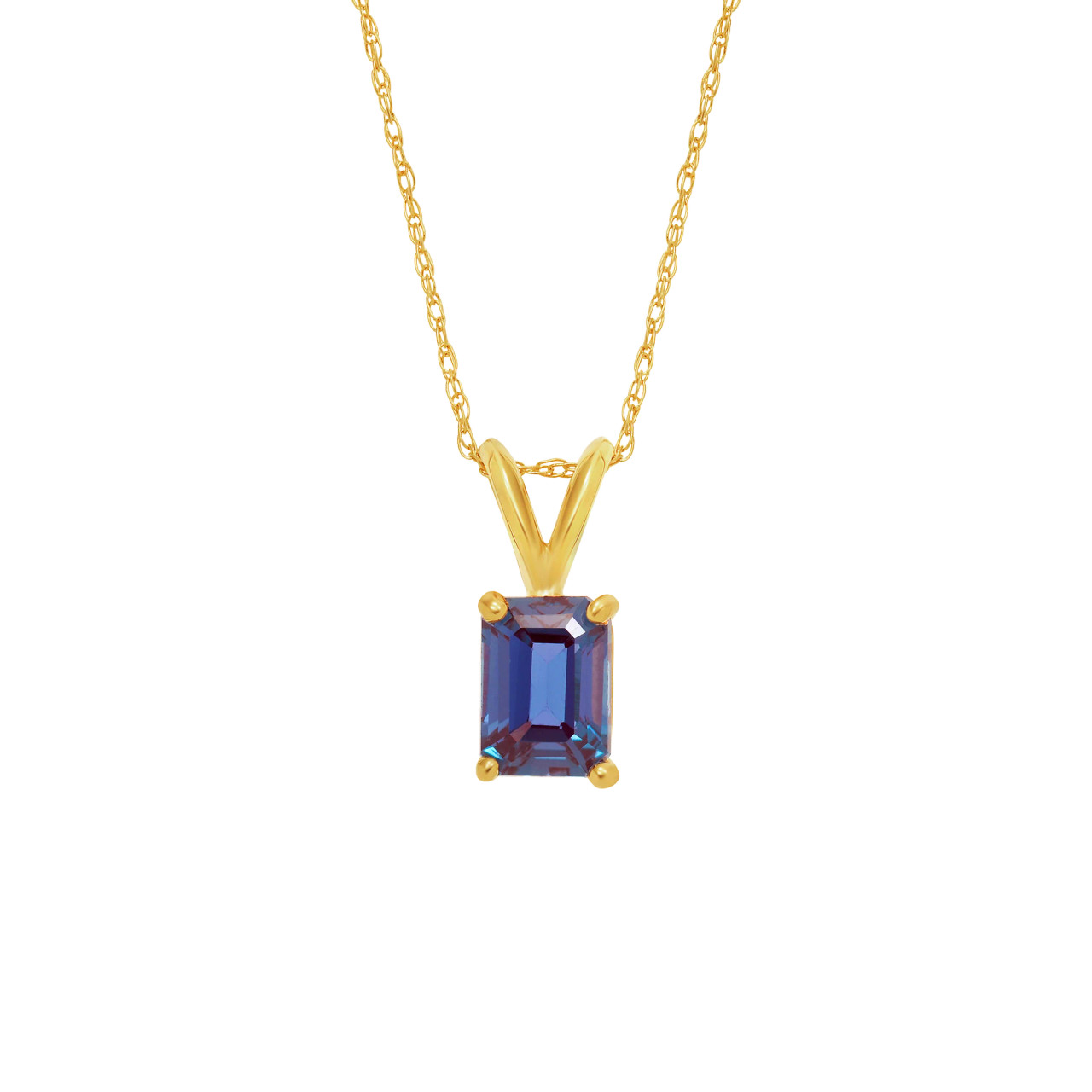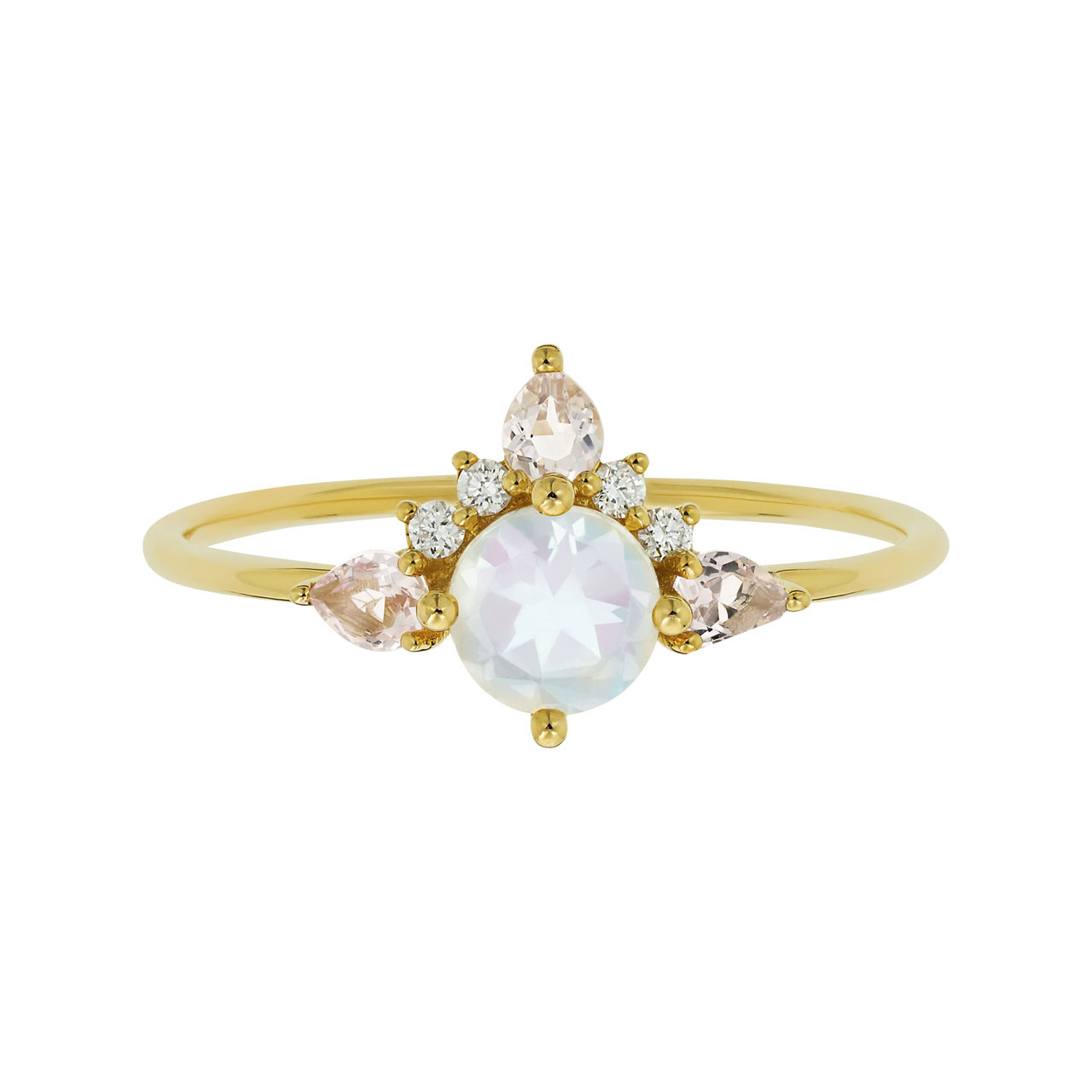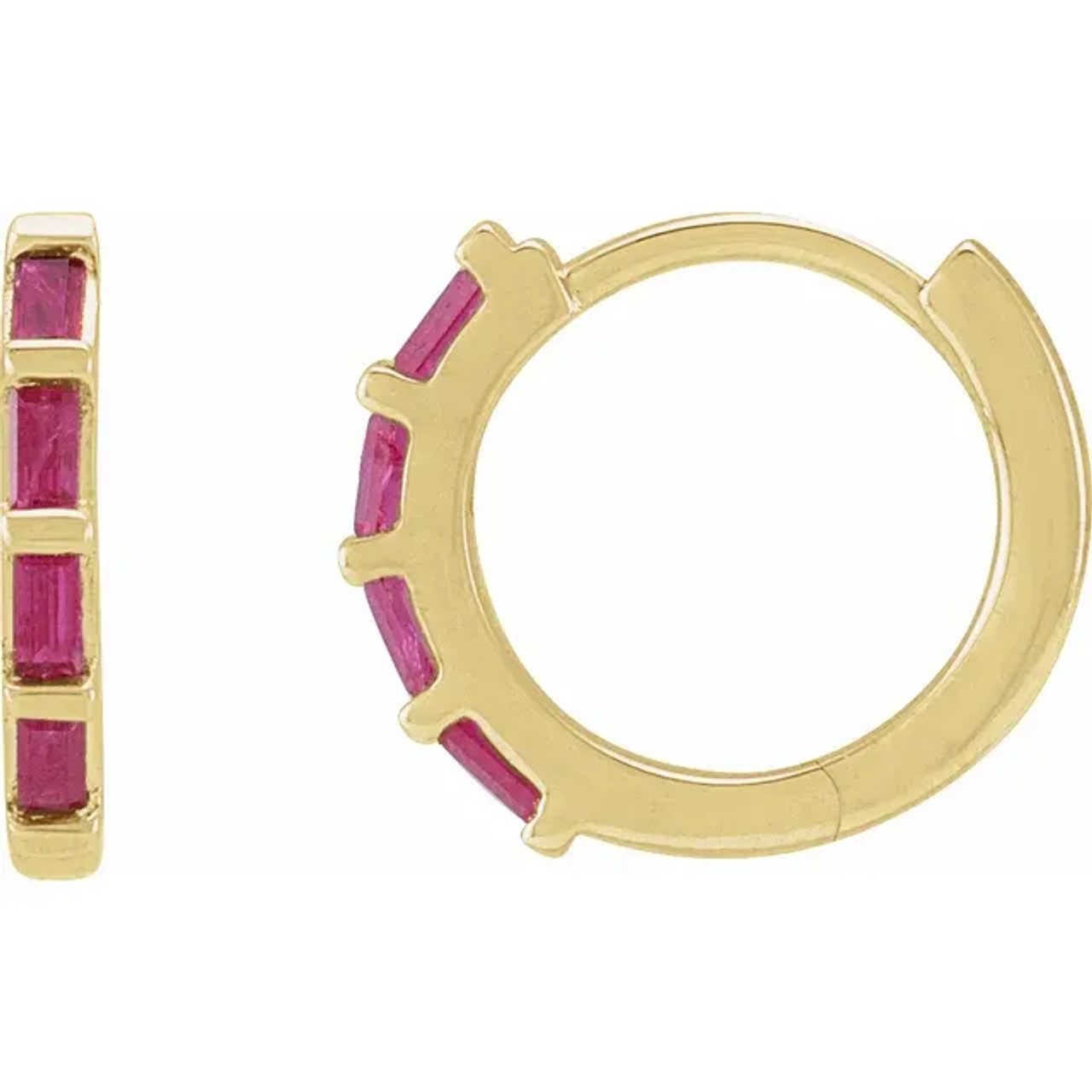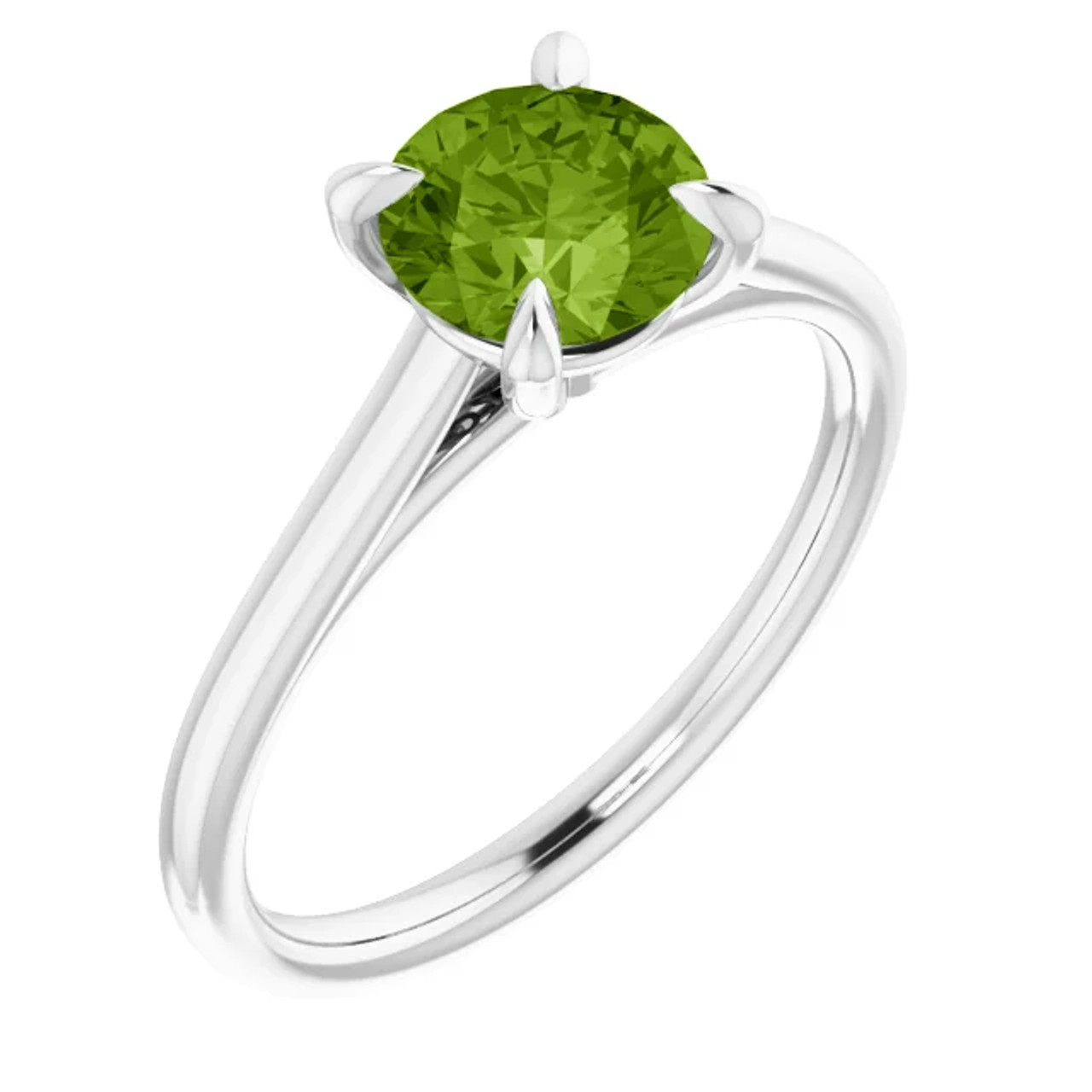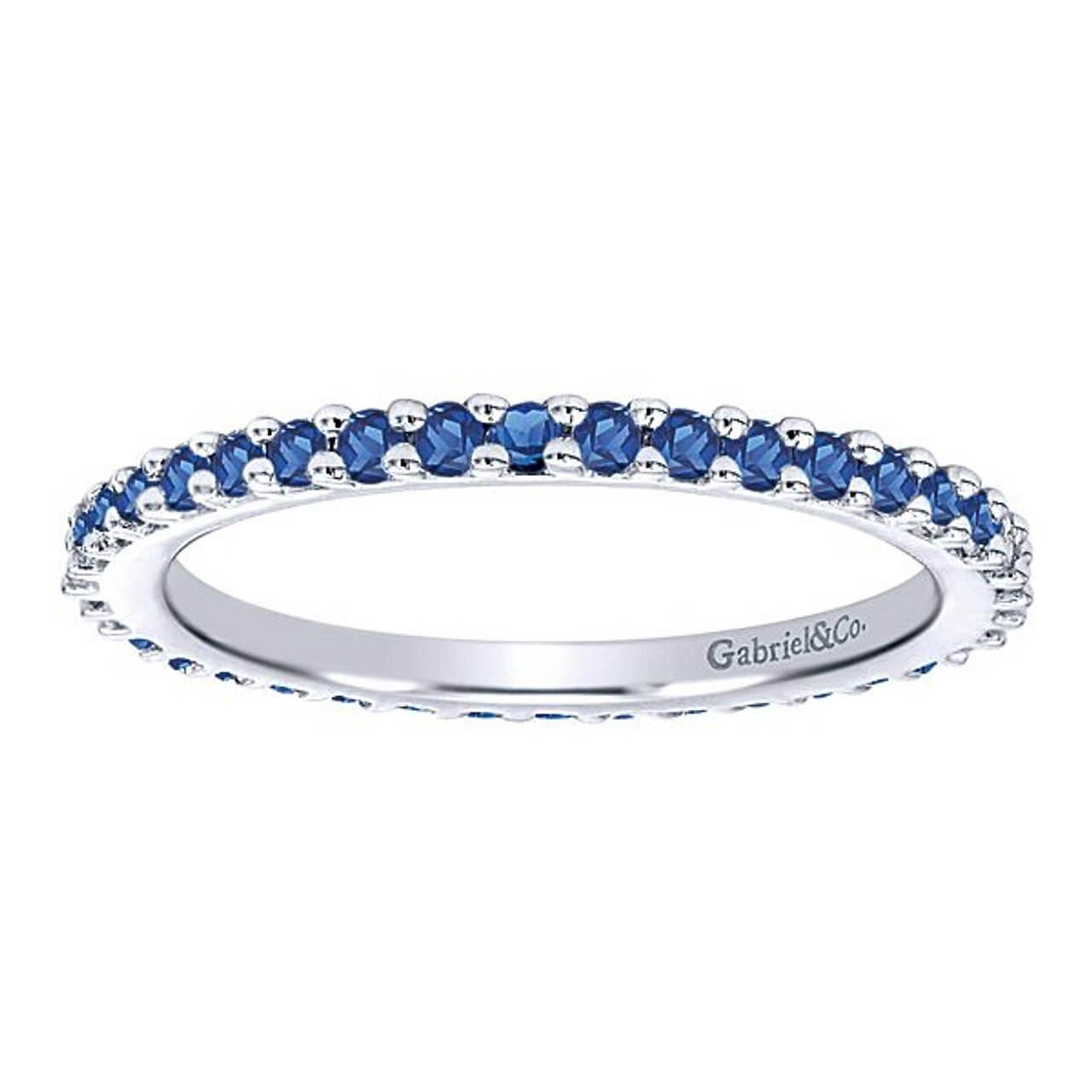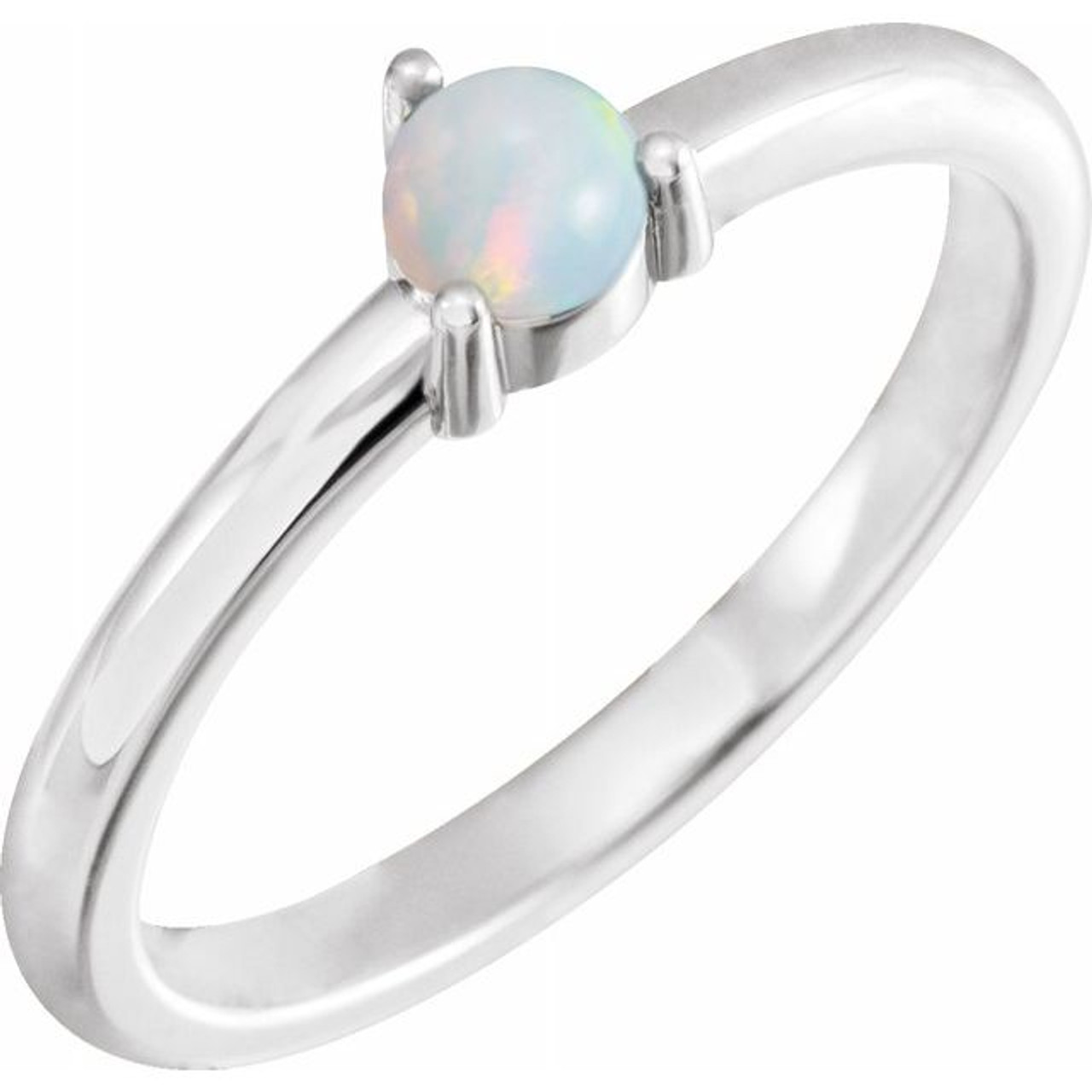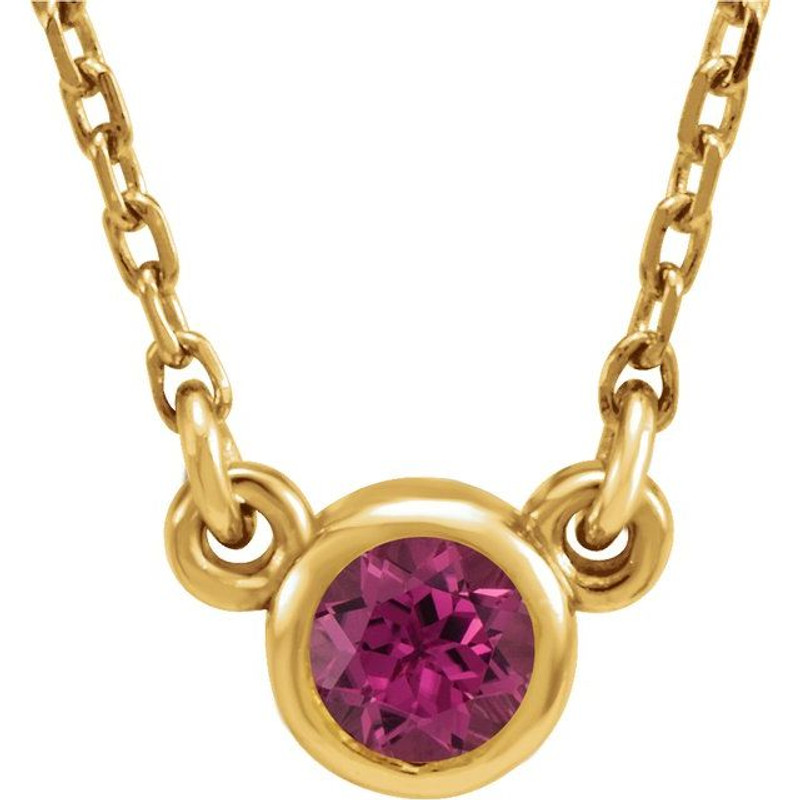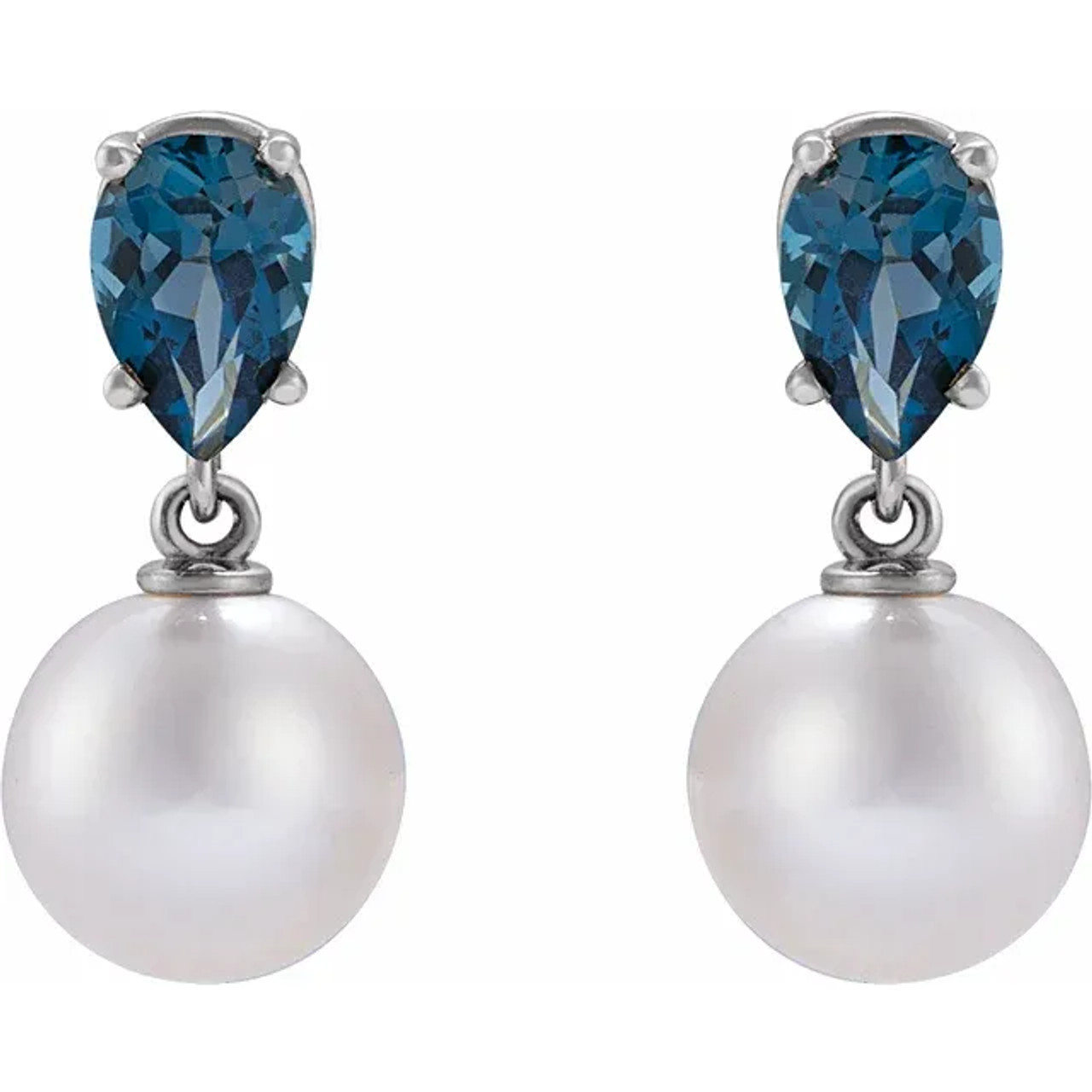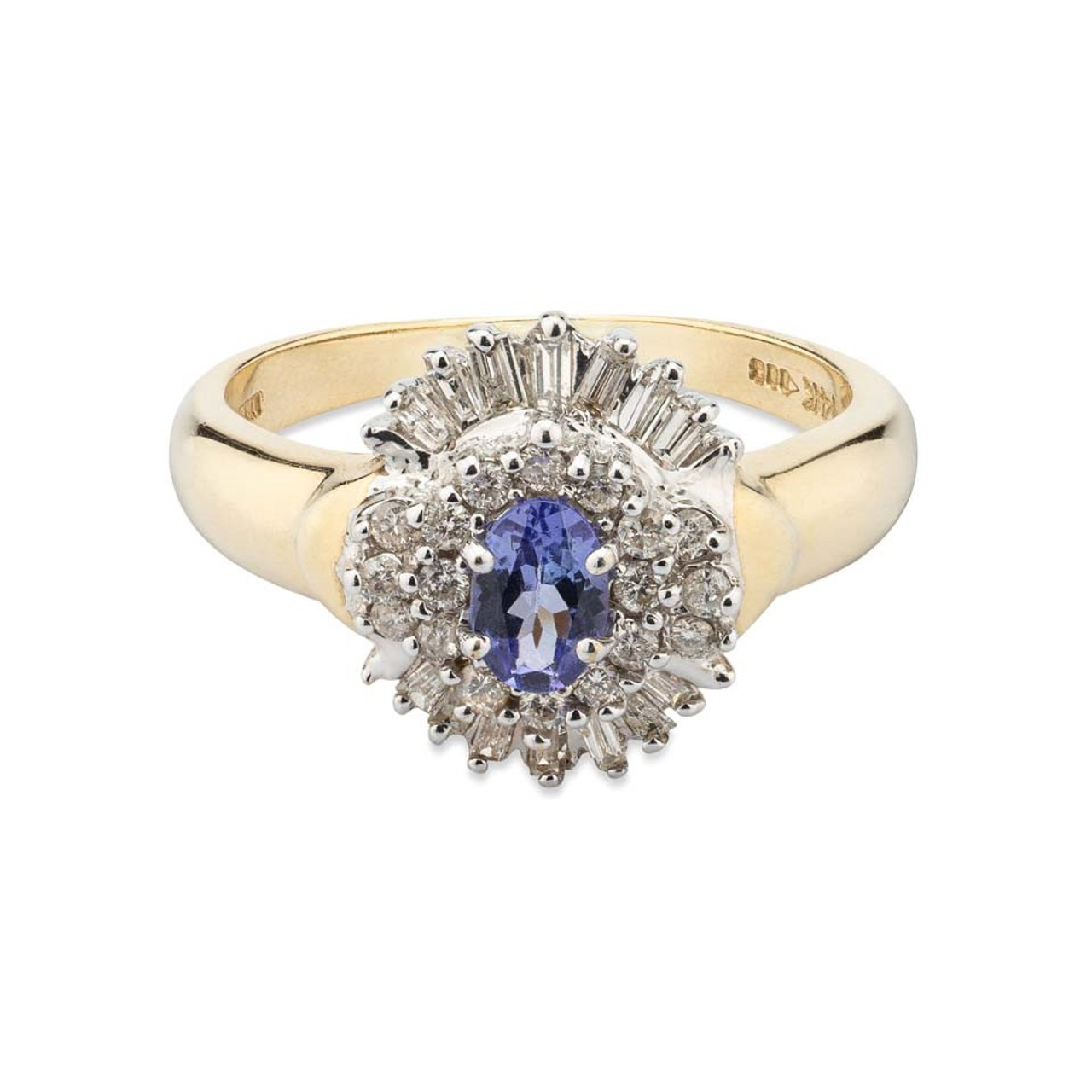Struggling to find a nice gift for a special someone in your life? We’ve all been there. If you’re completely out of ideas, why not opt for a piece of jewelry featuring their birthstone? It’s sure to be a beautiful and meaningful hit! Not sure where to start? Learn more about the popular birthstones below!
JANUARY
Garnet
Red garnets, ranging from rust to deep violet red, are particularly common. The term “garnet” actually
comes from the medieval Latin word for pomegranate. But this stone is also available in other colors — such as orange, yellow, purple and green. If you find a blue gem or one that changes colors, you’ve hit the jackpot, as these are some of the rarest! Garnets have been featured in jewelry since the Bronze Age and have been found across the globe, including Brazil, Greece, India, Iran, Pakistan and Wyoming. Today, Africa produces most of the garnets that we see.
Jewelry Tip: A garnet’s durability varies, depending on the type/color you choose, but it typically falls between 6.5 and 7.5 on the Mohs Hardness Scale — a scale that ranks the durability of diamonds, gemstones and other minerals. Since garnets are more prone to damage than other gems, such as diamonds and rubies, it’s best to avoid wearing them in daily rings, which could easily scratch. Before buying a garnet, the American Gem Society encourages shoppers to check the stone’s color and how it reacts in light.
Fun Fact: Garnet is also the official stone for celebrating a second wedding anniversary!
FEBRUARY
Amethyst
It’s the dead of winter. Surprise them with this beautiful, purple gem! Amethyst is part of the quartz family and most recognized for its various shades of purple, from lilac to deep plum. Iron impurities and the gem’s unique angles contribute to the diverse shades of color that you often see in a stone. Like natural diamonds, amethyst was once considered a rare find. But since then, it has been determined that quartz is the second most abundant mineral in the Earth’s crust. Amethyst has been found in mines in Russia, Brazil, Africa, and the U.S., particularly in Arizona.
Jewelry Tip: Amethyst is a fairly durable gem, scoring a 7 on the Mohs Hardness Scale. That means it can typically tolerate daily wear and tear in rings, earrings and other jewelry. This stone pairs well with different types of metals as well as warm and cool colors. So, it’s fashionable to wear amethyst any time of year! Just remember to regularly polish your piece, as it could start to dull over time. The American Gem Society also recommends avoiding amethyst that has too deep of a purple shade, as it could look black in certain lighting.
Fun Fact: Amethyst is the official stone for celebrating a sixth wedding anniversary! Ancient Greeks and Romans also believed that amethyst could make the recipient think in a clearer and more quick-witted manner.
MARCH
Aquamarine
Who wouldn’t love a gem representing the sea? This beautiful blue-green stone is part of the beryl
mineral family and comes in a range of colors, from very light to moderately dark. While lighter shades tend to have better clarity, larger stones offer more intense color, making them more valuable. Aquamarine is the state gem of Colorado and can be found in other dry places, like Brazil, Pakistan, Nigeria, Madagascar, Kenya, China and the Ukraine.
Jewelry Tip: This gem ranges between 7.5 and 8 on the Mohs Hardness Scale, making it a durable stone for daily use. Aquamarine works well when paired with different-colored metals, and it looks particularly stunning as a bold statement piece. We recommend choosing oval and emerald-shaped stones, as these cuts tend to complement aquamarine’s color and clarity.
Fun Fact: An aquamarine stone weighing more than 240 pounds was once discovered in Brazil! The gem is also the official stone for celebrating a 19th wedding anniversary!
APRIL
Diamond
Whether you’re buying for your mom or your soulmate, get them the birthstone that symbolizes eternal and lasting love! These precious gems are made of carbon. You won't be able to tell the difference, but two types of diamonds are on the market: natural and lab-grown. Natural diamonds were formed billions of years ago below the Earth’s surface and are therefore one-of-a-kind. Lab-grown diamonds, on the other hand, are created in a laboratory. But they’re still real diamonds!
Jewelry Tip: Diamonds not only score a perfect 10 when it comes to first impressions, but they also score a perfect 10 on the Mohs Hardness Scale. This means diamonds are the most durable of all gemstones. In fact, a diamond is so tough that it reportedly can only be cut by another diamond. You can therefore flash your stone on special occasions or any day of the week!
Fun Fact: Colorless diamonds may be a popular choice, but these beauties also come in a range of colors, from yellow and red to pink and blue. Deeper colors make them more valuable and rare. Diamonds are also the official stones for celebrating 10th and 60th wedding anniversaries, so you have some time to get your hands on one of those coveted colored stones!
MAY
Emerald
Spring is in the air, so why not give them the gemstone that defines the season and symbolizes loyalty,
new beginnings and peace? Similar to aquamarine, emeralds are also part of the beryl mineral family, but they possess a much richer green color. The most desired emeralds offer a bluish-green to deep green appearance. This color range is due to impurities in the stone’s chemical makeup. Countries around the world — such as Brazil, Zambia, Pakistan and Afghanistan — are home to emeralds, but Colombia has produced some of the most exceptional emeralds for more than 500 years.
Jewelry Tip: An emerald is a rather durable gem, ranging between 7.5 and 8 on the Mohs Hardness Scale, so it’s safe to wear emeralds daily! Just keep in mind that they’re more likely than diamonds to chip and scratch. The American Gem Society recommends wisely choosing the cut of your emerald and inspecting its color before buying. Consider an emerald-shaped stone, as the elongated, rectangular shape will allow more light to pass through the stone and therefore enhance color. Avoid emeralds that appear too dark and don’t evenly distribute color.
Fun Fact: According to some sources, the oldest emeralds are nearly 3 million years old! Emeralds are also the official stones for celebrating 20th and 35th wedding anniversaries!
JUNE
Pearl
Make them feel as precious as a pearl. These gems are created by mollusks, such as oysters and mussels, and found in freshwater as well as saltwater. Natural pearls were once found in various bodies of water across the globe, from the Persian Gulf and Red Sea to Sri Lanka and Venezuela. But as a result of “pearl fishing” (aka gathering/harvesting) for several centuries, natural pearls are now very rare. If you see a pearl in a jewelry store, it’s most likely a “cultured pearl,” where a pearl farmer or other individual intervened to start the growth process.
While white or cream-colored pearls are common, they’re also available in many colors, including black, yellow, pink and blue. Unlike most gemstones that are measured in carats, luster is a pearl’s most important characteristic. The best part? You don’t need to polish it to reveal that natural gloss!
Jewelry Tip: On the Mohs Hardness Scale, pearls only score between 2.5 and 3, making them truly precious gems! We suggest saving pearls for special occasions to prevent easy scratching and chipping. Make sure your pearl is smooth and free of scratches before purchasing. But even when out and about, keep in mind that pearls are sensitive to extreme heat and acidity. In fact, authentic pearls can practically melt when exposed to vinegar!
Fun Fact: Pearls are the official stones for celebrating a third wedding anniversary! They’re associated with purity and innocence, so pearls are a good choice for wedding day jewelry too!
Alexandrite
That’s right. June has more than one birthstone, and alexandrite is quite a contrast from the delicate
pearl! This rare gemstone is part of the chrysoberyl mineral family and has earned the nickname “emerald by day, ruby by night.” That’s because the stone changes color in different lighting, due to its uncommon chemical makeup. For example, alexandrite can flash bluish-green shades in daylight or under fluorescent light and shift to brownish or purplish red tones in dim settings. This stone was first spotted in Russia in the 1800s. Now, alexandrite is commonly found in Brazil, Sri Lanka and East Africa, but its colors aren’t as rich as the original Russian stones.
Jewelry Tip: Alexandrite scores an 8.5 on the Mohs Hardness Scale, making it a rather durable gem. It’s therefore an appropriate choice for daily jewelry that’s subject to wear and tear. The American Gem Society suggests focusing on color over clarity when buying alexandrite, as better clarity could mute the color change. Vivid tones and a drastic color shift make a stone more valuable.
Fun Fact: Natural alexandrite is actually harder to find than natural diamonds. As a result, it’s one of the most expensive gems. Some of the best Russian alexandrite has sold for $10,000 per carat! If you can locate natural alexandrite, it’s the official stone for celebrating a 55th wedding anniversary!
Moonstone
They’ll love you to the moon and back if you give them the gift of moonstone! The last June birthstone is made of layers of the mineral feldspar, which cast white and bluish hues, and is usually cut with a high dome to highlight its colors. Moonstones have been found in Sri Lanka, India, Australia, Madagascar and the U.S. In addition to its classic white and blue look, these gems also come in a variety of shades, such as yellow, green, blue, pink and peach. But Indian moonstones, which tend to have more brown, green and orange tones, are more plentiful and affordable.
Jewelry Tip: Moonstone only scores a 6 on the Mohs Hardness Scale, which means it’s more susceptible to cracking than most of the other birthstones mentioned so far. Consider limiting daily wear of moonstones and choose pieces that have less contact with common surfaces, like brooches and pendants. And of course, make sure to take proper care of your moonstone jewelry.
Fun Fact: Moonstone has been Florida’s official state gemstone since 1970! It was chosen to commemorate the Apollo 11 spaceflight, which landed on the moon, and other spacecrafts that launched from Florida.
JULY
Ruby
They’ll absolutely fall in love with this gorgeous, red gemstone that’s reportedly one of the rarest among
popular colored gemstones. Despite rubies’ intense color, they belong to the corundum family, a mineral that’s colorless in its original form! Of all corundum species, rubies are the most valuable because they’re the rarest. They have also existed for centuries, dating back to ancient China thousands of years ago. Notable rubies have come from Myanmar, the Himalayas and northern Vietnam, while others have been found in Afghanistan, Pakistan, Sri Lanka and Kenya.
Jewelry Tip: Rubies score a 9 on the Mohs Hardness Scale, making them an incredibly durable gem. Only diamonds score higher with a perfect 10. Rubies can therefore be worn in all types of everyday jewelry. If you’re looking for a top-notch ruby, choose one that features a pure, vibrant red or a purplish-red color. The amount of chromium in the stone affects the red color. More chromium results in a deeper color. It’s no wonder this gem symbolizes passion, protection and prosperity!
Fun Fact: Ruby is the official stone for celebrating 15th and 40th wedding anniversaries, but the gem is used in more than just jewelry. In 1960, the first laser was built and featured a ruby’s natural red light. Today, the stones are still used in lasers as well as watches and medical tools.
AUGUST
Peridot
Ah, summer. This fun gem, typically seen with yellowish-green tones, will complement their summer wardrobe nicely! Peridot comes from the magnesium-rich mineral, olivine, and gets that iconic green color from iron, a key part of the stone’s chemical makeup. The gem was first discovered thousands of years ago on the Egyptian island of Zabargad. Today, it can be found in China, Pakistan, Tanzania and the U.S. In fact, roughly 80-95% of the world’s peridot supply is produced in Arizona.
Jewelry Tip: Peridots score slightly higher than moonstone on the Mohs Hardness Scale, ranging from 6.5 to 7, but they still aren’t recommended for daily wear. They’re also susceptible to damage from acid and acidic perspiration. You’ll most likely find round and emerald-shaped peridots, but they’re also available in oval, pear, cushion, triangular and marquise shapes. If you plan on buying a ring, choose a shape that will flatter their finger.
Fun Fact: Peridot is the official stone for celebrating a 16th wedding anniversary! If you’re interested in checking out the world’s largest peridot, head to the Smithsonian Museum in Washington, D.C. to feast your eyes on the 310-carat gem!
SEPTEMBER
Sapphire
Fall is just around the corner, and they’ll love a blue sapphire to symbolize the new chill in the air. These
precious gems belong to the family of corundum minerals, just like rubies. Sapphires and rubies actually share much of the same chemical composition. When corundum is red, it’s called a ruby. When it’s another color, it’s often designated as a sapphire. These stones represent loyalty, sincerity and integrity, and they’re available in various colors, such as pink, orange, yellow, green and purple. While Madagascar is the largest producer of sapphires, they’re also found in Australia, Sri Lanka, Myanmar (formerly Burma), Thailand and the U.S., specifically Montana.
Jewelry Tip: Sapphires are very durable gems, ranking just below diamonds (with a score of 9) on the Mohs Hardness Scale. They can therefore handle daily wear while still looking gorgeous. If you’re seeking a top-notch sapphire, the American Gem Society recommends choosing a vivid blue stone. Similar to alexandrite, some sapphires change colors from blue to reddish-purple, depending on the light source.
Fun Fact: Perhaps the most famous sapphire is the 12-carat blue sapphire engagement ring that Prince William gave to Kate Middleton in 2010. The ring previously belonged to his mother, Princess Diana, as a proposal gift from Prince Charles in 1981. Sapphires are also the official stones for celebrating fifth and 45th wedding anniversaries!
OCTOBER
Opal
When you give them an opal, you give them the rainbow. This precious stone is known for flashing a range of colors when viewed from many angles. The concept is often called “play-of-color,” and it happens when tiny circles of a chemical compound break up light and display a variety of colors. Several types of opals reportedly exist, but only a few are recognized around the world. Gems that feature “play-of-color” are referred to as “precious opals,” while non-flashy stones are simply called “common opals.” Almost all of the world’s opal supply has been found in Australia, but these gemstones have also been mined in Ethiopia, Brazil, Peru, Turkey and the U.S. Red and yellow stones are typically harder to find and more valuable than stones with blue and green tones.
Jewelry Tip: Opals range between 5 and 6.5 on the Mohs Hardness Scale and therefore aren’t as durable as other gems. Similar to moonstone, we suggest wearing opals primarily for special occasions and sticking to pieces that won’t easily chip when worn, like earrings and pendants. It’s also important to note that opals contain a large amount of water and have been known to crack in extreme temperatures and under direct lighting. The American Gem Society recommends keeping your stones in a safe place, where they’re away from high temperatures or low humidity. To make your opals last even longer, keep them in a padded cloth bag to prevent scratching from other jewelry.
Fun Fact: Opals are the official stones for celebrating a 14th wedding anniversary! The largest and most valuable stone was seen during the 1956 Olympic Games in Melbourne, Australia. At 11 inches in length, this gem reportedly weighs 17,000 carats (equivalent to 7.6 pounds) and was valued at $2.5 million in 2005!
Tourmaline
October is another month that offers more than one birthstone! Unlike most gems, tourmaline isn’t
composed of just one mineral. Instead, a complex group of minerals with different chemical compositions produce tourmaline, which features one of the widest color ranges. Some of the most popular shades include pink, red, green, blue and violet. The stone was first discovered by a Spanish conqueror in Brazil during the 1500s and was actually mistaken for emeralds for multiple centuries. Hints of iron and possibly titanium could be responsible for tourmaline’s green and blue colors, while manganese contributes to the gem’s red and pink shades. Tourmaline can primarily be found in California and Maine, but it’s also available in Brazil, Sri Lanka, Afghanistan, Madagascar and Kenya, among other countries.
Jewelry Tip: Tourmaline scores between 7 and 7.5 on the Mohs Hardness Scale, so it’s fairly durable and appropriate for daily wear. While this gem can tolerate light and most chemicals, heat can cause damage. So, take good care of your tourmaline piece!
Fun Fact: Tourmaline is the official stone for celebrating an eighth wedding anniversary! But what might be most interesting about this gem is its ability to become electrically charged when exposed to heat and pressure. Once tourmaline is charged, it acts like a magnet. It’s able to move back and forth as well as attract and repel dust particles!
NOVEMBER
Citrine
Fall is here, so why not get them a piece of citrine jewelry that features a nice, warm glow? Citrine is a form of quartz that often has a transparent, yellow-to-orange look. It’s actually one of the most affordable and popular yellow gems. But the natural form of this stone is rare. So, you’re likely seeing amethyst that has undergone a heat treatment to look like citrine. Brazil is home to much of this heat-treated amethyst, but citrine can also be found in Bolivia, Spain, Madagascar, Mexico and Uruguay.
Jewelry Tip: Citrine is a fairly durable gem, scoring a 7 on the Mohs Hardness Scale. This stone can tolerate daily wear and tear, so it’s a great option for all types of jewelry. If you want a top-notch piece of citrine, look for stones that feature strong yellow, orange and red tones and lack visible imperfections inside of the gem. Less valuable citrine will appear pale or cloudy.
Fun Fact: Citrine is the official stone for celebrating a 13th wedding anniversary! It was once believed that citrine could also alleviate anger.
Topaz
Often confused with citrine, topaz is November’s second birthstone! Most topaz starts out as colorless or
pale blue, which means it undergoes a treatment of heat and radiation to enhance its colors. After this heat process, the stone can take on many colors. Blue topaz is probably most prevalent, but imperial topaz, with its vibrant orange and pink highlights, is considered the most coveted gem. Due to its availability, topaz is fairly inexpensive. High-quality topaz has been found in Brazil for hundreds of years. It has also been mined in several other countries, including Nigeria, India, Sri Lanka, Mexico, Australia and the U.S., particularly California, Utah and New Hampshire.
Jewelry Tip: Even though topaz scores an 8 on the Mohs Hardness Scale, it’s not as tough as you might think. The stone is likely to chip and crack. But when cut correctly, topaz can be perfectly suitable for everyday wear. So, choose your pieces wisely! In its natural form, topaz is often seen in long, cylindrical pieces and therefore looks best in oval and pear shapes.
Fun Fact: Topaz is the official stone for celebrating a 19th wedding anniversary! The colorless version of the gem has even become popular as an inexpensive alternative to diamonds!
DECEMBER
Tanzanite
Cold and snow may be upon us, but they’ll be smiling from ear to ear, admiring their beautiful tanzanite! This gemstone is a member of the zoisite mineral family and reflects blue, violet and purple shades, depending on the viewing angle. Most stones must be cut properly and receive heat treatments to bring out the rich blue and violet shades while hiding any distracting tones, such as yellow, green or brown. Tanzanite was named after Tanzania, where it was discovered in the 1960s. It’s still found in just one location: near Mount Kilimanjaro.
Jewelry Tip: If you’re seeking a near perfect piece of tanzanite, deep violet-blue and sapphire blue tend to be the most valuable colors. The gem ranges between 6 and 7 on the Mohs Hardness Scale. Although it’s resistant to normal heat, light and chemicals, it could still crack with extreme heat or sudden temperature changes. We therefore recommend this gorgeous stone for special occasion earrings and pendants rather than daily rings.
Fun Fact: Tanzanite is the official stone for celebrating a 24th wedding anniversary! Most gems available for sale weigh less than five carats, but the Smithsonian Institution possesses a nearly 123-carat tanzanite!
Zircon
A new year is almost
here. Celebrate their birth month and new beginnings with this beautiful gem!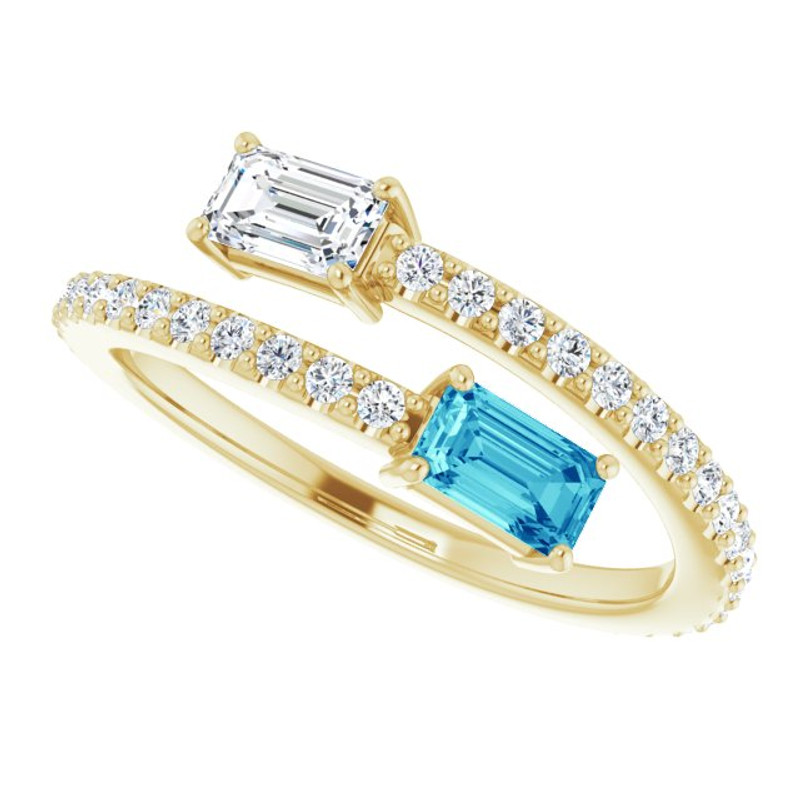 Zircon is the oldest mineral on Earth and available in various colors, such as
orange, yellow, green and blue. This stone is commonly found in blue tones,
which make up 80% of total zircon sales. Zircon was first found in Australia
4.4 billion years ago, and the country still produces more than one-third of
the world’s stone supply. Other zircon sources include Thailand, Sri Lanka,
Canada and the U.S.
Zircon is the oldest mineral on Earth and available in various colors, such as
orange, yellow, green and blue. This stone is commonly found in blue tones,
which make up 80% of total zircon sales. Zircon was first found in Australia
4.4 billion years ago, and the country still produces more than one-third of
the world’s stone supply. Other zircon sources include Thailand, Sri Lanka,
Canada and the U.S.
Jewelry Tip: Zircon scores a 7.5 on the Mohs Hardness Scale, but it’s a fairly brittle gem. We advise against wearing zircon on a daily basis, as its edges can chip. You’ll often see zircon with a brilliant cut. This highlights the stone’s luster and fire, which is likened to that of a diamond. When choosing a zircon, inspect the stone’s cut to make sure you don’t see any chips or blurring.
Fun Fact: Different colors of zircon come in various sizes. You’ll typically find orange and yellow stones that range between zero and five carats. Blue and green gems are the biggest, weighing up to 10 carats!
Have a question? We can help!
Gage Diamonds is Chicago's premier jewelry showroom and online retailer of engagement rings, wedding bands, and fine jewelry. We offer a selection of stunning birthstones, from diamonds, rubies and sapphires to opals, topaz and pearls.
We’re committed to helping you find the ring of your dreams. For inspiration, browse our website or set up an appointment with a member of our trusted staff at our in-person showroom.
We offer no-credit-needed financing – apply and get your approval within 24 hours!
Pay over time, because love shouldn’t wait.

